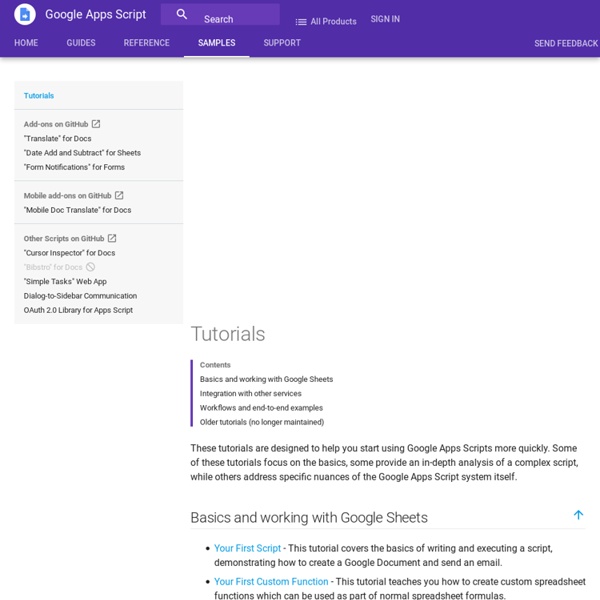



A Great Way to Use Google Docs with your Students One of my first posts here in Educational Technology and Mobile Learning was about Google Docs in Education and by the time I wrote and published it, Google Docs was still not popular and did not have the advanced features it has now. Since then, many articles have been published on this topic and one of the most popular of them all was Google Docs 52 Secrets Educators Need to Know about. I am personally impressed by the power of this service and the several things we can achieve by using it. I always urge my students to use it to create presentations, docs, slideshows, spreadsheets and many more. Google Docs has a huge and promising potential in education and the proof is the video I embedded below which shows how Mr Hanish uses Google Docs to handle group work with his students. The Tech Curve has initially published this video and that was where I learned about it.
Google & Site performance: The compilation answer album | Maile Ohye: Love & Technology The comments from my last post about text indent made me feel like Captain Hammer, so this time I’m crossing my fingers to make allies, not enemies. Anyone want to talk about site performance? Don’t we all love a faster site? Users dig it. Webmasters can capitalize on it. I’ve consolidated information from personal conversations with people like Sreeram Ramachandran and Steve Souders, and I combed WMC blog posts and my blog comments for anything site performance related. How is a page’s performance measured? It’s measured very, very carefully… We’re of course experimenting with several types of measurements. How big of an impact is site performance on Google rankings? From our original WMC blog post: [ While site speed is a new signal, it doesn't carry as much weight as the relevance of a page. Does Webmaster Tools’ Site performance feature consider the site’s geographic preference settings and report accordingly? What about ads? Can you flush the document early? Yes. Definitely! Sweet!
A-Z Créer son site web en quelques minutes L'étape incontournable : la création d'un site web pour héberger des informations, des fichiers (cours, exercices, corrections, etc.) à destination des élèves (et aussi un lien vers son cahier de textes en ligne ?) Nous utiliserons l'outil Blogger, service de blog gratuit. Le didacticiel suivant vous permettra de créer votre blog en quelques minutes. Il est conseillé d'afficher la vidéo en mode plein écran en cliquant sur le bouton approprié. Si vous ne possédez pas de compte Google, vous pouvez suivre ce petit didacticiel pour en créer un rapidement. Blogger permet d'écrire des articles, y insérer des images, mais il ne propose pas d'héberger des fichiers (doc, pdf, Excel, etc.). Pour créer un cahier de textes et insérer un lien vers ce cahier sur son site web, reportez vous à cet autre article. Pour ajouter des formules mathématiques à votre blog au format LaTeX, lire cet article.
in Education Nexus 7, ASUS Transformer Pad, and HP Slate8 Pro tablets deliver powerful educational content to the hands of students at an affordable price. These tablets come with the array of apps in Google Play for Education and the best of Google apps like Docs, Chrome, Gmail, Earth and more. With NFC touch deployment technology - simply tap device to device to set up a classroom of tablets in just minutes. And with access to Google's Admin console, schools can manage devices easily.
Créer un site gratuit avec Google Site : guide TechnoConseil, société de conseil et de formation spécialisée dans le cloud computing (informatique dans les nuages) propose en libre consultation une présentation spécialisée : tutoriel pour la création d’un Google Site. La solution gratuite en ligne Google Site permet en effet de créer un site Internet assez facilement tout y ajoutant des fonctionnalités multimédia de l’univers Google : photos avec Picasa, carte avec Google Maps, vidéos avec YouTube, statistiques avec Google Analytics… La possibilité d’intégration de ces différents éléments, une approche modulaire de la création de site entièrement en ligne et un rendu immédiat à visualiser constituent quelques points forts notables de Google Site ; une alternative aux plates-formes gratuites de blogs actuelles. Le tutoriel pour la création d’un Google Site développe une méthodologie pas-à-pas, étape par étape de la construction d’un espace Web selon son projet, avec captures d’écran tout au long des 84 pages de ce guide. Licence :
Kaizena · Give Great Feedback · Voice Comments for Google Drive Editey Website in Drive